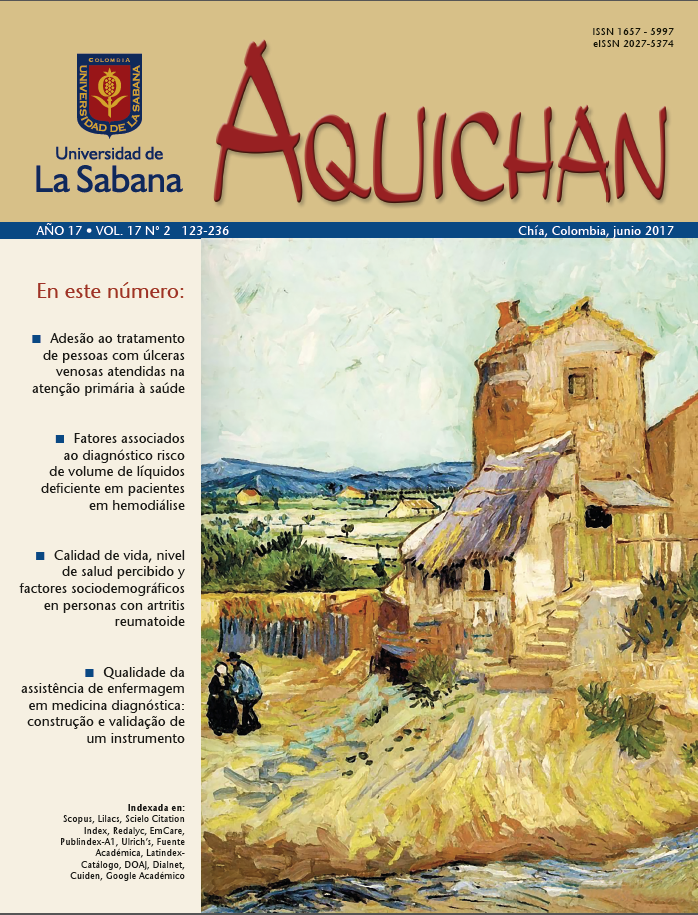Factors Associated with a Diagnosis of Fluid Volume Deficit Risk in Patients on Hemodialysis
Keywords:
Nursing diagnosis, renal dialysis, nursing, nursing research, body fluidsAbstract
Objective: verify the association between socioeconomic and clinical characteristics and the factors associated with a diagnosis of fluid volume deficit risk in patients who are on hemodialysis. Materials and methods: This is a cross-sectional study done at the dialysis unit of a university hospital in northeastern Brazil. Featuring 50 patients, it was conducted through interviews and physical examinations. The Mann-Whitney U-test was used to analyze the data. Results: A number of significant associations were verified; namely, knowledge deficit and hemodialysis time (p = 0.037); weight extremes and family income (p = 0.040); weight extremes and ultrafiltration volume (p= 0.010), and fluid loss through abnormal pathways and ultrafiltration volume (p = 0.000). Conclusions: Associations were identified between the factors associated with a nursing diagnosis of fluid volume deficit risk and the socioeconomic and clinical characteristics of patients who are undergoing hemodialysis. The factors associated with that diagnosis can be influenced by socioeconomic characteristics and clinical aspects.
Downloads
Published
How to Cite
Issue
Section
License
1. Proposed Policy for Journals That Offer Open Access
Authors who publish with this journal agree to the following terms:
- The journal and its papers are published with the Creative Commons License Attribution-NonCommercial-NoDerivatives 4.0 International (CC BY-NC-ND 4.0). You are free to share copy and redistribute the material in any medium or format if you: give appropriate credit, provide a link to the license, and indicate if changes were made; don’t use our material for commercial purposes; don’t remix, transform, or build upon the material.





